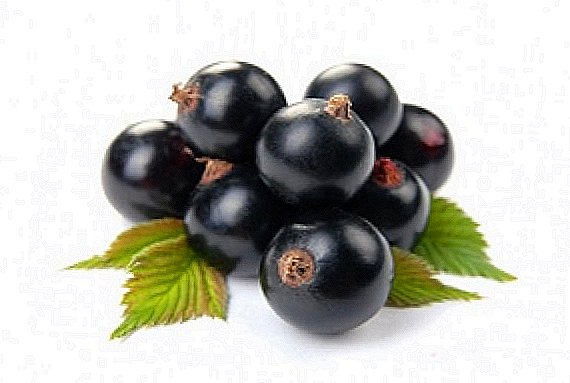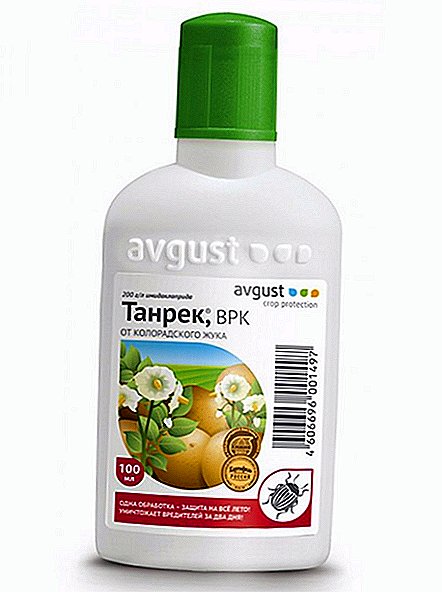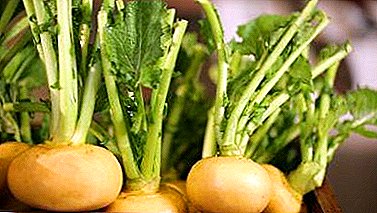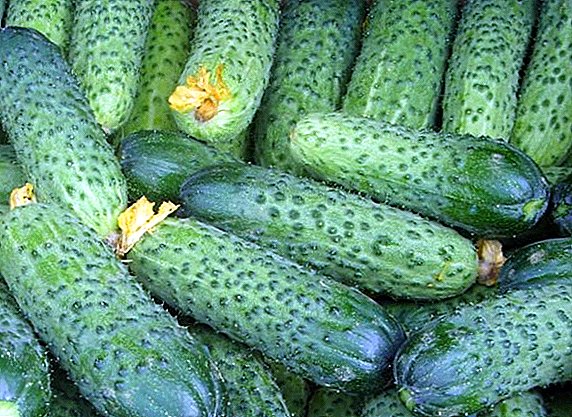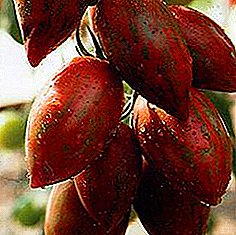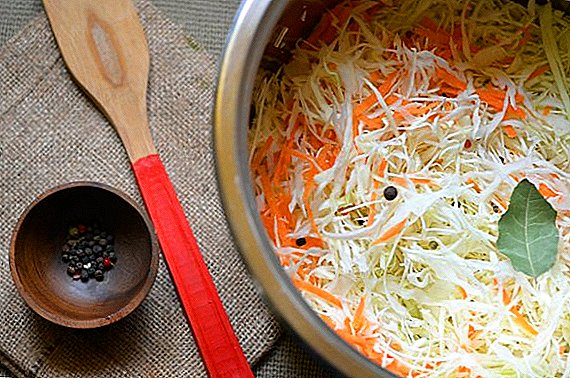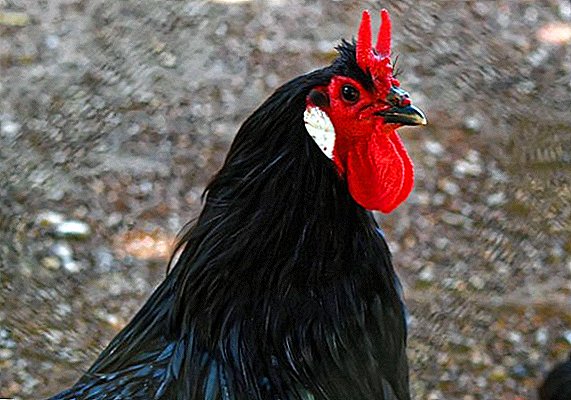 The real "Frenchwoman" - hens of breed "La Flash" - it is difficult to confuse with other crosses. They have an outstanding appearance, a peculiar mind and a rather specific character. Their main advantage poultry farmers consider the extraordinary taste of meat, uncharacteristic for other breeds of birds. We will talk today about how to grow and maintain the La Flush breed correctly.
The real "Frenchwoman" - hens of breed "La Flash" - it is difficult to confuse with other crosses. They have an outstanding appearance, a peculiar mind and a rather specific character. Their main advantage poultry farmers consider the extraordinary taste of meat, uncharacteristic for other breeds of birds. We will talk today about how to grow and maintain the La Flush breed correctly.
Breed history
Breed "La Flash" was known in France as early as the XV century. It is still unknown how the cross appeared, but Sarthe, La Flush commune, is considered to be his birthplace. As the "genetic basis" for the birds, the breed of Norman hens "Krevker", having the same type of feathering and a V-shaped ridge, was made.
Did you know? Translated from French, "La Flash" is translated as "arrow." But the unusual shape of the crest, in the shape of the letter V, attached another name to the birds - “the hens of Lucifer”. And, indeed, before the French considered them to be evil, and instead of eating them, they burned at the stake.
In the United States and in the territory of post-Soviet countries, the breed appeared in the XIX century. However, in the first case, it did not take root due to the inability of the birds to adapt to the harsh climatic conditions, and in the second case, it completely disappeared after the Second World War. Thanks to the efforts of modern poultry farmers, in 2000 the interest in “La Flash” among the farmers of our country was renewed again.

At the present time, representatives of this breed are mainly grown with the aim of obtaining tasty, delicious meat.
Breed standards
Thanks to non-standard, specific and very "elegant" appearance, the birds of "La Flush" are easily distinguished from other breeds. The body of the chicken is medium in size, has a triangular shape, low landing, it is decorated with well-developed, powerful, close to the body, wings.
The breed of hens Araucan, Ayam Tsemani, Hamburg, Chinese Silk, Krevker, Curly, Milfleur, Paduan, Sibright, Fenix, Shabo differ in their beautiful appearance.The head is small, but wide, with a tubercle on it with a small tuft consisting of a pair of feathers. On both sides of the head are almond-shaped earlobes of white color. The bird's silver beak is slightly curved, of medium size with large, brightly contoured nostrils. The extremities of the bird are rather long, powerful, without plumage, with five fingers.
A distinctive feature of "La Flush" is a comb in the form of a Latin letter V. The length of the ridge horns is 2-3 cm. At the same time, the pedigree representatives are not allowed the absence of a notch between the horns, the presence of a third horn or large protuberances.

Birds have a beautiful rich plumage with a black and green tint. In the area of the tail and feathers of the wings you can observe shades of blue, malachite or gray-blue colors.
Character
The nature of the birds, despite their frightening name "Lucifer Hens", is quite tolerable. They are quite active, cautious, do not like a closed space. Birds can not boast of friendliness, credulity and openness, but, nevertheless, it is quite possible to find a common language with them.
Chickens have a peculiar mind, they are wary of others, therefore during adaptation they may not allow a person to come to him or run away from him. Birds are very fond of freedom, are able to walk for a long time in the summer, while flying well.
Important! “La Flush” is especially fond of green grass, therefore, seeing it, they can fly even through high fences. In such cases, it is recommended to trim the wings or keep chickens in covered aviaries.
Often, males show a militant, aggressive character, often because of females enter into a fight with other males. It is recommended, in order to avoid cruel fights, to spread the cocks immediately to different hens.

Productivity
"La Flush" refers to meat and egg birds, so it can be grown both for eggs and meat. As for productivity, it is on average. In the year, the chicken is able to carry 200 eggs, but many farmers claim that in reality this figure is slightly lower.
The layer reaches sexual maturity at the age of 4-5 months. An interesting fact is that until this time the development rates of females and males are the same, therefore it is difficult for inexperienced poultry farmers to distinguish them from each other.
In order to obtain meat, chicken Brama, Jersey Giant, Cochinchin, Cornish, Plymouthrok, Orpington, Faverol, Langshan are grown.
The peculiarity of La Flush chicken eggs is their large size and weight, which is rarely below 70 g. Eggs are distinguished by a rich white or cream color and the presence of a hard, durable shell. Fertility of eggs is rather low, about 65%, but the survival rate of the young is over 95%.

In most cases, such chickens attract poultry farmers with their very tender, juicy meat, which even in “old” chickens does not become tough. The average weight of a male is 4 kg, females - 3 kg, while the proportion of fat in them is extremely small.
Hatching instinct
Well developed maternal instinct of hens "La Flush" is truly surprising. After all, they are not only happy to incubate and raise chickens, they actively help other birds who have no instinct for incubation. Laying birds are always ready to replace other mummies and perfectly perform their maternal functions.
Learn how to plant a hen.
The beauty of this breed lies in the fact that in the process of brooding, a male can come to replace the hen. If the hen needs to leave, then the daddy-rooster will willingly sit in her place.

Maintenance and care
In order for the birds of this breed to settle down well, they should ensure a comfortable microclimate in the hen house.
Chicken coop
Chickens do not like confined space and do not accept cramping, so the chicken coop should be quite spacious.
Important! The crowding of individuals will lead to the development of various diseases in them, as well as a decrease in egg production.
In the house should always be warm and dry, it is especially important to maintain an optimal temperature in winter, as the birds do not tolerate frosts and are not adapted to the cold. To maintain heat in the room, the floor can be covered with straw, dry peat or sawdust.
In order for the hen to regularly bring eggs, it is recommended to equip the chicken coop with an additional light source during the winter period in order to extend the length of the daylight to at least 12 hours a day. Nests are calculated based on the number of hens. One nesting place is enough for 3-4 chickens.

Courtyard for walking
Due to the fact that "La Flush" - birds of "high flight", the yard for walking should be fenced to a height of not less than 2 m, and it is even better to cover it with an awning or a net so that the hens do not spread over the adjacent lands. In the aviary it is necessary to plant green grass, and if there is no such possibility, then just pick it up and sketch it. It is also recommended to arrange a place for "swimming". To this end, dig a small depression in the ground and fill it with a mixture of sand and ash.
During bird walks, you do not need to visit the birds too often, as they prefer calm and wary of guests.
Learn how to build a chicken coop, set up lighting, heating, ventilation in it, how to build walking for chickens.
Feeders and drinkers
Birds should always have access to fresh and clean water. A sufficient number of drinkers should be placed in the hen house so that the chickens are not crowded. In feeders, it is better not to leave wet food, but to clean them after each meal. It is recommended to regularly pour dry cereal mixtures in them: corn, wheat, oats or barley.

Shedding and a break in egg production
In winter, when the air temperature drops, the “French women” begin to shed actively, their immunity decreases, they become more susceptible to infections and diseases. During this period, a decrease in egg production may also be observed, but not its complete absence. The breeder’s main task is to insulate the hen house, prevent drafts from forming, ensure a high-quality, well-balanced diet and protect the herd from viral and infectious diseases as much as possible.
Learn how to make feed for laying hens at home, what is the rate of feed for laying hens for a day, what vitamins do hens need for laying eggs.
Herd replacement
As a rule, French farmers grow poultry solely for the purpose of obtaining original meat to taste, so they send the bird for slaughter at the age of 9-10 months. If we talk about the ability to lay eggs, then it remains in the layer for 3-4 years. Therefore, when growing poultry in private households, it is better to focus on these figures.

Feeding
When organizing the nutrition of chickens of this breed, you can use food intended for traditional breeds of birds, but with some recommendations.
Chickens
Chickens "La Flash" have a high viability, resistant to various diseases, but poorly tolerate low temperatures. From the first days of life, the chicks are active, so it is very important to provide them with good nutrition.
Learn how to feed chickens during the first days of life, what to give to chickens, how to use an infrared lamp to heat chickens.
As feed perfectly suited feed mixture with a high content of proteins. 12 hours after hatching, the chicks need to be provided with the first feed. The youngsters respond well to mixtures of fresh herbs, cereals and shredded boiled eggs. Regularly, at least 4-5 times a week, you should add vitamin and mineral preparations to your diet.
By the end of the second month, chickens are transferred to adult food, which is based on cereals, wet mash, vegetables, fresh greens, mixed feed.

Adult chickens
French hens prefer nutritious, rich in proteins, vitamins and minerals, feed. It is better to use ready-made combined mixtures that contribute to maintaining the health of the bird and increasing its productivity.
Chickens will not give up green fodder, which are involved in the formation of their immune system. They should be provided with access to the grass around the clock: in summer, they should be fed with grass and greenery, in winter - with germinated grain, wet masses with the addition of pine needles and grass granules.
To maintain the attractive appearance of the birds it is necessary to feed the grain mixtures, in particular, an excellent effect gives a mixture of wheat and corn. Vegetables (beetroot, carrot, zucchini) will help to fill the lack of vitamins in the menu of "Frenchwoman".
Learn how to give chickens fish oil, bread, yeast, foam, bran.
Breeding
Breeding birds "La Flush" does not require much effort from the breeder. Females are good chicks, they are able to hatch not only their eggs, but also other chickens. As a rule, chicks appear in late spring or in the first weeks of summer.

If the room where the young live dwells, it becomes cool, then it is necessary to provide additional heating:
- in the first week of life, the temperature in the house should be +30 ° C;
- in the second week - +26 ° C;
- in the third - +24 ° C;
- in each subsequent column of the thermometer should be lowered by 2-3 degrees, until it reaches the mark of +18 ° C.
- the first weeks - 25 individuals per 1 square. m;
- until the end of the second month - 10 individuals per 1 square. m
Did you know? A special feature of the breed "La Flash" is the weak sexual dimorphism of young. Up to 4-5 months, it is impossible to distinguish a chicken from a rooster by external signs.

Diseases
Despite the fact that the immune system of chickens of this breed is quite strong, sometimes it is also not able to withstand certain diseases. The most "weak" place of birds is the digestive system, problems with which lead to indigestion. Layers are also susceptible to colds.
Since the birds have a rather cheerful, active disposition, it is quite simple to recognize the disease from them: they become lethargic, very quiet and passive. A sick chicken needs to be sown from others and use the help of a veterinarian.
To prevent health problems will help: the right diet, comfortable conditions of detention and hygiene in the chicken coop.
Learn what to do with salmonellosis, Marek's disease, aspergillosis, mycoplasmosis, coccidiosis, infectious bronchitis, a syndrome of reduction of egg production, conjunctivitis, salpingitis in chickens.
How to choose
The problem of choosing a good "purebred" young "La Flush" today is quite acute, since few people are engaged in targeted breeding. Mostly unscrupulous sellers in bird markets or private farms offer “mongrels” who are not able to please either with good egg production or meat quality.

To buy "purebred French women", the only way out is to order batches of eggs directly from breeders in France or Germany, and the second option is much cheaper. On average, the cost of one egg is 1.2-1.5 euros.
In Russian poultry houses, the cost of one egg starts from 160 rubles, and the price of one monthly chick starts at 1,000 rubles.
Advantages and disadvantages
"La Flash" is a rather complicated breed of chickens, which has both its disadvantages and advantages. Among the latter can be noted:
- excellent taste of meat;
- unusual, bright and catchy appearance;
- sufficient egg production;
- high percentage of young stock survival;
- well-developed instinct nasizhivaniya.
- the need to create warm, clean and dry conditions in the hen house;
- need for significant space;
- complex nature;
- the high cost of livestock and its rarity;
- low resistance to cold and frost.

"Devilish" chickens "La Flush", despite their formidable name and unusual appearance, are completely non-malignant and can easily take root with birds of other breeds. They are unpretentious in feeding and maintenance, but it is important for them to maintain cleanliness and order in the house, as well as the possibility of daily walks in the fresh air. These chickens today are still a wonder in the domestic poultry industry. But, perhaps, a few years later, thanks to its numerous advantages, this breed will gain deserved popularity in our area.
Breed Reviews

Too light color, lack of horns or defective branched horns. Red-colored buds, lack of symmetry and underdeveloped chest, white feathers of the wings; paws of a different color; nostrils of irregular shape, standing unsteadily, like on stilts, low landing, poorly pronounced abdomen in a hen, squirrel tail, flat tail, very light or blackish eyes.




